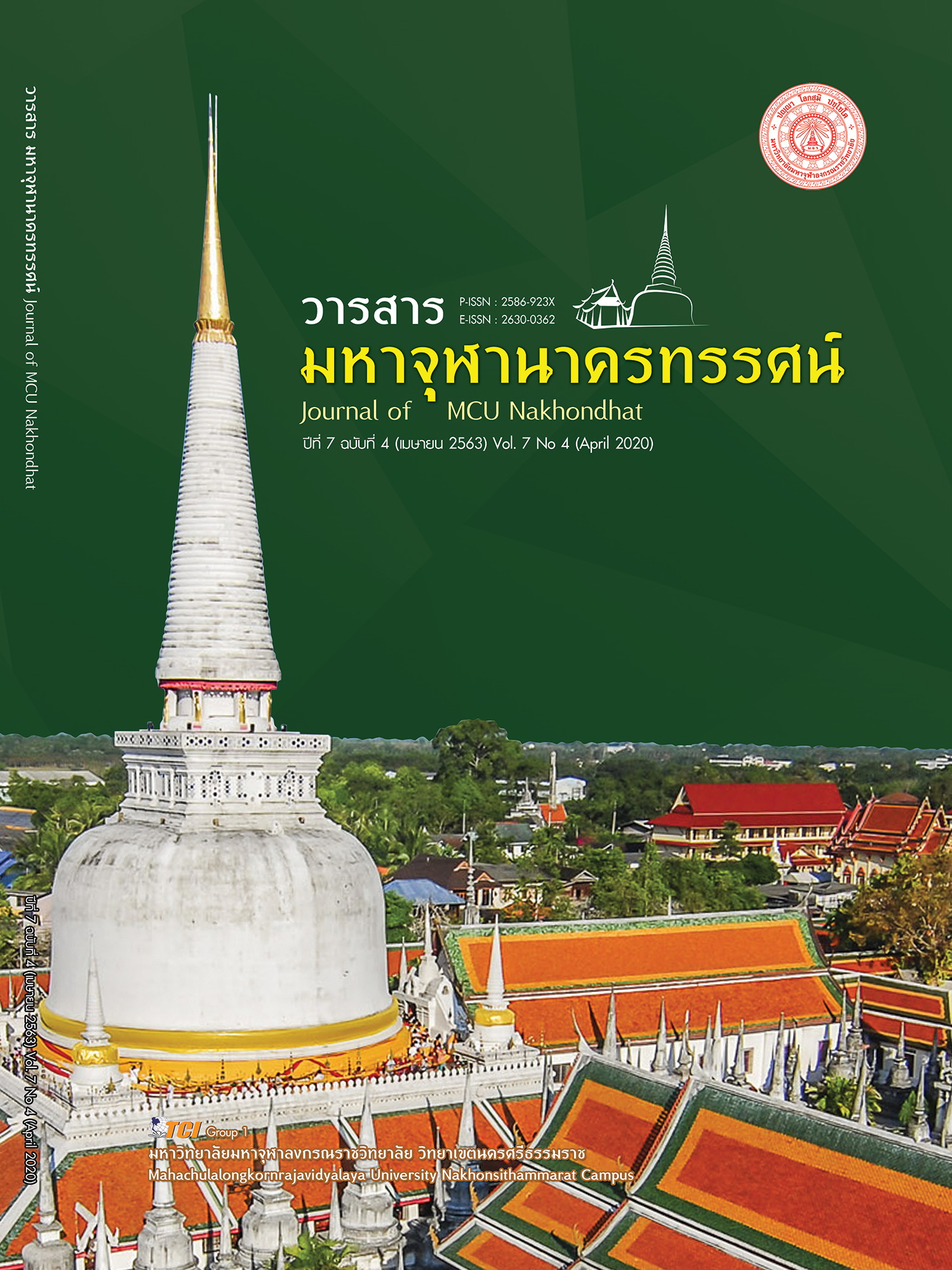STUDENTS AND PARTICIPATION IN ART AND CULTURE MANAGEMENT IN HIGHER EDUCATION INSTITUTES
Main Article Content
Abstract
Arts and culture in higher education institutes are activities that occur at the professors and staff. There are a small group of students who realize the importance and participate in activities in art and culture which students most students who are interested in being students in the fine arts. Because of a communicating the meaning of art and culture is not obvious and unclear in arts and culture management. Therefore, Students consider art and culture are difficult to understand. Despite the fact that art and culture are not just for specific people but art and culture are stories of life, how to live in a community, society. Therefore, higher education institutes should have process to encourage students to realize the importance of art and culture and understand the role of being students in art and culture. By supporting students to truly participate in the management of art and culture in higher education institutions. Not only participating in activities but also participate in the process of planning, implementation, monitoring, evaluation and development of art and culture. Encouraging students to participate throughout the management process will make students feel that they have been important and are conscious the benefits and values of art and culture. Therefore, students will create the atmosphere, motivation and communication between student groups. Causing students to become more involved in art and culture.
Article Details
References
ไพโรจน์ สุขสัมฤทธิ์. (2541). การมีส่วนร่วมของประชาชน. วารสารพัฒนาชุมชน, 27(2), 25-28.
กระทรวงวัฒนธรรม. (2559). ร่างกรอบทิศทางยุทธศาสตร์ 20 ปี ด้านวัฒนธรรมตามกรอบทิศทางยุทธศาสตร์ชาติ ระยะ 20 ปี. เรียกใช้เมื่อ 5 ตุลาคม 2560 จาก https://www.m-culture.go.th/th/ewt_dl_link.php?nid=7162
กาญจนา แก้วเทพ. (2553). การบริหารจัดการวัฒนธรรมพื้นบ้านแบบมีส่วนร่วมด้วยนวัตกรรมการวิจัย. กรุงเทพมหานคร: ภาพพิมพ์.
ณิชาภัทร จาวิสูตร. (2562). การพัฒนารูปแบบการบริหารจัดการด้านศิลปวัฒนธรรมและความเป็นไทยในสถาบันอุดมศึกษา. ใน ดุษฎีนิพนธ์การศึกษาดุษฎีบัณฑิต สาขาการบริหารและการจัดการการอุดมศึกษา. มหาวิทยาลัยศรีนครินทรวิโรฒ.
ธนาภรณ์ เมทณีสดุดี. (2543). ความพึงพอใจของนักท่องเที่ยวชาวต่างประเทศที่มีต่อการรับบริการสื่อวีดิทัศน์. ใน วิทยานิพนธ์วิทยาศาสตรมหาบัณฑิต สาขาเทคโนโลยีที่เหมาะสมเพื่อการพัฒนาทรัพยากร. มหาวิทยาลัยมหิดล.
ธนิก เลิศชาญฤทธ์. (2550). การจัดการทรัพยากรทางวัฒนธรรม. กรุงเทพมหานคร: คณะโบราณคดี มหาวิทยาลัยศิลปากร.
ประกาศกระทรวงศึกษาธิการ. (2561). ราชกิจจานุเบกษา เล่ม 135 ตอนพิเศษ 199 ง หน้า 19 – 21 (17 สิงหาคม 2561).
ประภัสสร โพธิ์ศรีทอง. (2556). โลกาภิวัตน์กับการจัดการวัฒนธรรม. เรียกใช้เมื่อ 17 สิงหาคม 2561 จาก https://oknation.nationtv.tv/blog/print.php?id=887666
วรรณา วงษ์วานิช. (2549). ความคาดหวังและความพึงพอใจของนักท่องเที่ยวเชิงอนุรักษ์. กรุงเทพมหานคร: สำนักพิมพ์มหาวิทยาลัยธรรมศาสตร์.
ศิริชัย กาญจนวาสี. (2547). การมีส่วนร่วมของชุมชนในการอนุรักษ์สิ่งแวดล้อมของเกาะช้าง จังหวัดตราด. กรุงเทพมหานคร: บุญศิริการพิมพ์.
สุรชัย ทุหมัด. (2560). ปัจจัยที่ส่งผลต่อการมีส่วนร่วมของนักศึกษากับโครงการศิลปวัฒนธรรม ของสถาบันวัฒนธรรมและศิลปะ มหาวิทยาลัยศรีนครินทรวิโรฒ. วารสารการศึกษาและการพัฒนามนุษย์, 1(2), 74-80.
Levinson, D. & Ember, M. (1996). Encyclopedia of cultural anthropology (Vols.1 - 4). New York: Henry Holt.


